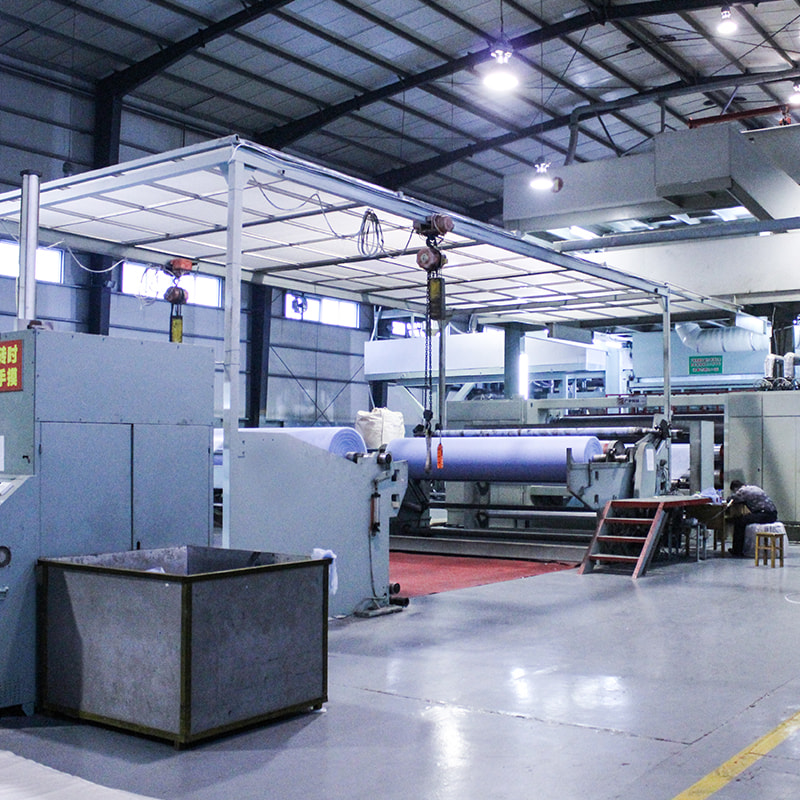Spunbond Layer:
Extrusion: The process begins with the extrusion of thermoplastic polymers, such as polypropylene (PP) or polyethylene (PE). The polymer chips are melted and extruded through spinnerets, which are fine nozzles with multiple holes.
Spinning and Cooling: The molten polymer filaments are stretched and drawn into thin fibers as they exit the spinnerets. These fibers are then rapidly cooled using high-velocity air streams, solidifying them into continuous filaments.
Web Formation: The filaments are collected on a moving conveyor belt or drum, forming a web of randomly oriented fibers.
Bonding: The spunbond web passes through a calendering process or thermal bonding method, where heat and pressure are applied to bond the fibers together, forming a cohesive fabric.
Meltblown Layer:
Extrusion: Another extrusion process is used to produce the meltblown layer. Similar to spunbond, thermoplastic polymers, typically PP, are melted and extruded through specialized spinnerets with much smaller and finer holes.
Meltblowing: The extruded polymer streams are subjected to high-velocity hot air, which breaks the molten polymer into microfibers and disperses them onto a moving conveyor or drum. The resulting nonwoven layer consists of randomly arranged microfibers.
Bonding: The meltblown layer can be thermally bonded or combined with the spunbond layer using adhesive or ultrasonic bonding techniques.
Spunbond Layer:
An additional spunbond layer can be added on top of the meltblown layer, following a similar process as described in step 1, to provide enhanced strength and stability to the SMS fabric.
Finishing:
The SMS nonwoven fabric may undergo additional processes, such as calendaring, heat setting, or surface treatments, to improve its properties, texture, or appearance.
It's worth noting that the specific manufacturing processes and equipment used for SMS nonwoven fabric production may vary among manufacturers, but the general principle of combining spunbond and meltblown layers remains consistent. The resulting SMS fabric offers a combination of strength, filtration efficiency, barrier properties, and softness, making it suitable for a wide range of applications.








 English
English 中文简体
中文简体 русский
русский عربى
عربى





